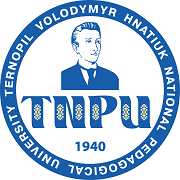PSYCHOLOGICAL AND SOCIAL MODELS IN PERSUASIVE LANGUAGE
Abstract
The paper focuses on the issue of mental models as pre-existing mental structures that are activated through persuasive language and which are the real locus of persuasive processes.Even if it is a platitude that language itself has no persuasive power on its own, it is important to emphasise the complexity of various cognitive structures that are the real triggering mechanism allowing language persuasive potential to be realised.Mentioning briefly psychological mechanisms of persuasion (as more prominent in the relevant literature) the author shows one social model in particular that seems to be of primary importance in persuasive discourse. The so-called Relational Model postulates universal decision-taking mechanisms, which means that it is the social model that constitutes the starting point for any analysis of possible persuasive potential of language.Far from presenting any coherent approach, the paper essentially aims at emphasising the approach to persuasion that starts from a necessary cognitive model (actually pointing out the multiplicity and complexity of such models) through which “persuasive language” may be analysed and understood, rather than analysing language first, and then anchoring language used within some relevant context.
References
Bara, B.G. Cognitive Pragmatics. The MIT Press. 2010.
Burke, K. A Rhetoric of Motives. University of California Press. 1969.
Chaiken, S.. ‘The heuristic model of persuasion’. [in:] Zanna, M. P., Olson, J. M.,
Herman, C. P. (eds.) Social influence: The Ontario symposium Vol. 5. Hillsdale, N.J.:
Lawrence Erlbaum Associates. 1987, 3 - 39.
Fiske, A. P.. “Relational Models Theory 2.0.” in Haslam, N. (ed.) Relational Models
Theory: A Contemporary Overview (Mahwah, New Jersey and London: Lawrence Erlbaum. 2004.
A.P. Fiske i N. Haslam, The Four Basic Social Bonds. Structures for Coordinating
Interaction [in:] M.W. Baldwin (red.) Interpersonal Cognition, The Guilford Press 2005.
Laughlin, R. B. A Different Universe: Remaking Physics from the Bottom Down. Basic
Books, New York, 2005.
Haslam, S. A. Psychology in organisations: The social identity approach (2nd ed.). London: Sage. 2004.
Nash, W. Rhetoric. The Wit of Persuasion. Cambridge: Basil Blackwell. 1989.
Perelman, C. & L. Olbrechts-Tyteca. The New Rhetoric: A Treatise on Argumentation.
Indiana. University of Notre Dame Press. Translated by John Wilkinson and Purcell Weaver.1969.
Petty, R. E., & Cacioppo, J. T. Attitudes and persuasion: Classic and contemporary
Approaches. 1981.
Petty, Richard E; Cacioppo, John T. "The elaboration likelihood model of persuasion".
Advances in experimental social psychology: 125. 1986.
Seiter, J. S. & R. H. Gass.. Persuasion: Social Influence and Compliance Gaining.
Harlow. Pearson Education Limited. 2013.
Stiff, J. B.. Persuasive Communication. New York / London: The Guilford Press. 1994
Downloads
Published
Issue
Section
License

This work is licensed under a Creative Commons Attribution-NonCommercial 4.0 International License.










